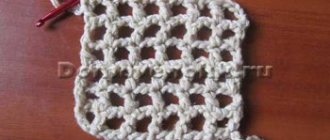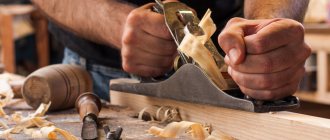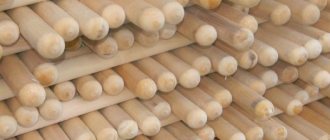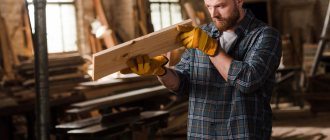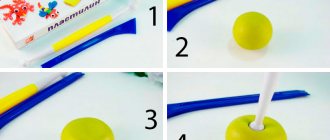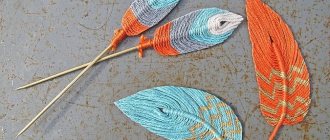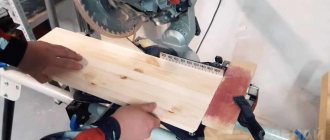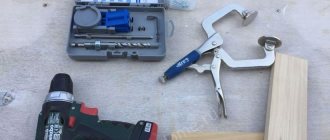The Russian housing construction market is again moving towards stable growth - and it seems that even the experiment with the introduction of escrow accounts will not significantly affect its development. Thanks to this, the production and sale of fastening materials is becoming an increasingly promising business area.
Self-tapping screws are used both by private individuals during repairs and by large construction organizations. The production of self-tapping screws is a profitable business idea, the implementation of which will allow the entrepreneur to receive a stable income.
1. Application of self-tapping screws 2. Production technology 3. Investments 4. Registration 5. Preparing the premises 6. Equipment 7. Raw materials 8. Personnel 9. Ways of implementation 10. Payback calculation
Use of self-tapping screws
The official name of the self-tapping screw is self-tapping screw element. The material has a high fastening ability (due to the thread), which determines its popularity in the construction industry. There are many types of self-tapping screws: they differ in material and features of the structural elements (head, slot, end).
| Thread pitch | Application area | Diameter, mm | Lengths, mm |
| Average | Universal, for different types of fastening | 3.0; 3.5; 4.0; 4.5; 5.0; 6.0 | 12; 16; 20; 25; 30; 35: 40; 45; 50: 60: 70: 80: 90:100:120:140; 160; 180; 200; 220 |
| Frequent, carving in 2 passes | Metal sheets up to 0.9 mm thick without dowels. You need to drill a hole first | 3.0; 3.5; 4.0; 4.5; 5.0; 6.0; 8.0 | 12 — 200 |
| Rare | Soft materials without dowels (wood, plastic, plaster) | M | 16 — 150 |
| Medium, herringbone profile | Concrete, brick, hammered into dowel | 3.0; 3.5; 4.0; 4.5; 5.0; 6.0; 8.0 | 12 — 200 |
| Asymmetric | Elements of modern wooden furniture. Chipboards, plywood. You need to drill a hole with a diameter of 4.5 or 7 mm. | 5.0; 7.5 | 40 — 70 |
| Variable with notch | Concrete, brick, without dowels (dowels). It is screwed into a hole 15 mm longer than the self-tapping screw. | 7.5 | 70 — 200 |
Self-tapping screws are used to work with:
- metal products;
- wood products;
- plasterboard sheets;
- sandwich panels;
- window profiles.
Classification of screws
Based on the shape of the head, screws are divided into 4 main types:
- with a semicircular head,
- with hex head,
- with a countersunk and semi-concealed head,
- confirmations.
Basic modular values for screw sizes:
- Diameter 2 millimeters, shaft length 7-16 mm and head height 1.4 mm;
- Diameter 4 millimeters, shaft length 13-60 mm and head height 2.8 mm;
- Diameter 5 millimeters, shaft length 13-70 mm and head height 3.5 mm.
Regulatory documents for screws
Regulatory normative documents on screws:
- GOST 1145 “Screws with a countersunk head. Design and dimensions",
- GOST 1144 “Screws with a semicircular head. Design and dimensions",
- GOST 1146 “Screws with a semi-countersunk head. Design and dimensions",
- GOST 11473 “Screws with hexagonal head. Design and dimensions",
- DIN 7998 "Threads and threaded ends for screws",
- ANSI B18.6.1 “Wood Screws (Inch Series).”
With the development of technology, classic screws have been significantly replaced by more modern ones, the production of which uses high-strength steels, which allows them to be used without drilling preparation holes. It is because of this property that they are called “screws”. The steel from which such self-tapping screws are made better ensures the quality of the fastener and, in some cases, allows the fastener to be reused. Additionally, anodized coatings provide steel self-tapping screws with protection against corrosion.
Having received such improvements, the previously ordinary screw has become much more convenient and attractive to consumers, as it has allowed them to save on fasteners and speed up installation work. The development of technology has made it possible to use self-tapping screws not only when working with wood and other materials with low hardness and density, but also with steel and concrete.
Wood screws
Initially, the purpose of the screw was to secure the fastening of wooden parts, including most building elements. To work with wood, currently, screws are used that are specially adapted separately both for fastening parts of hardwood products and for precision furniture work. A common feature of a wood screw is that it has a larger thread pitch and a higher thread height. This feature allows you to securely hold the screw in the wood fibers.
To fasten wood parts, both self-tapping screws and those that require pre-drilling are used. Some of the types can be used together with dowels. Thanks to the wide range, screws can be successfully used in the installation of slats, bars and boards and other wooden elements with ligation between them. Also, the head of screws for this purpose may have a hexagonal slot, which allows significant torque to be applied.
Wood and metal screws
Types of wood screws
Universal fastener for steel and chipboard
In construction, modern materials are now widely used, such as steel elements or particle boards or oriented strand boards. Here too, the most popular fastening elements are screws. For such tasks, universal-purpose fasteners have been developed, which are equipped with a semicircular head or ring, and screws in the form of studs are also manufactured.
For fastening composite materials such as chipboard, fiberboard and sheet metal, screws with a sharp tip for self-drilling and an average thread pitch are now used. Such fasteners are equipped with a countersunk or semicircular head, and they can be easily screwed flush with the surface of the material being mounted. To protect against the harmful effects of the external environment, such screws are also galvanized.
Screw option for concrete
A modern option for installing various decorative elements on concrete involves the possibility of using special screws that successfully hold in place after installation. They have a special feature - a thread of variable height. This configuration allows for good fixation in hard but brittle materials. To prevent unscrewing, the screw has additional notches on the head. For the most reliable fastening, a mounting hole is drilled under the screw.
Screws for concrete
It is worth noting that a concrete screw can be used for aerated concrete, brick and natural stone, and even for the installation of plastic window structures.
Furniture screws (confirmed)
Such screws are uniquely different in shape from the shape of conventional screws. They have a blunt end without threads for convenient positioning in the hole, the head is stamped to fit a hex key, and the threads have a large pitch. To ensure a tight connection, there is a thickening near the cap. The diameter of the confirmations is designed for installation in holes of 5-7 mm, and the length is in the range of 40-70 mm.
Confirmats and a drill for them
Purpose: assembly of furniture from chipboard, wooden panels, MDF, OSB, plywood, etc. A hole must first be drilled in the material, the diameter of which will be two millimeters less than the diameter of the confirmation thread. After this, the confirmat is screwed into the material with a hex key or bat.
Market situation
The self-tapping screw business is directly related to the construction sector, since its participants are the main consumers of screws.
Due to the difficult international situation and problems in the economic sphere (domestic and global), the last few years have been marked by a crisis in many industries in Russia, including construction.
Now the situation is returning to normal. The construction market fully recovered by the end of 2022. According to data for the first quarter of 2018, 19.6% more apartments were commissioned compared to the same period in 2022. During this period, 72.5% more residential buildings were commissioned. The general situation, the macroeconomic environment, indicates an increase in the consumption of building materials - that is, in favor of the business of producing self-tapping screws.
Types of self-tapping screws
These fasteners are divided by area of use. Some are intended for metal, others for wood, and others are universal self-tapping screws. In addition to these main groups, there are also parts of a narrow specialization - for GVL (as Gypsum Fiber Sheets are usually called for short), for GKL (these are also Sheets, but Gypsum Cardboard) and for fastening objects on concrete bases. There are also self-tapping screws for metal profiles under double-glazed windows and for installing roofing materials.
But with all this, one point should be taken into account. When it comes to self-tapping screws intended for screwing into metal, it is assumed that this is a sheet-type material or metal profiles made from it. But in thick plates, sockets are often pre-drilled. Then installing the fasteners will require less physical effort and time. In addition, such an operation is resorted to when its quality is in doubt.
Moreover! Holes are also often drilled in wood for self-tapping screws. Especially if it is dense, such as oak or ash. Otherwise, the performer will face the above troubles. But experienced home craftsmen first make holes for fasteners of this type in soft wood. If this is not done, the wood may simply crack when screwing in the screw. This happens when its installation location is close to the edge. And drilling a hole is a kind of safety net. But here you need to comply with a certain requirement. It is formulated as follows: the diameter of the socket for the fastener should be about one or two millimeters less than this parameter of the connecting part itself.
A few words about the self-tapping screws included in the “universal” group. It is a mistake to interpret this name as saying that they are suitable for securing “everything.” The scope of application of such fasteners is the connection of structural elements made from various materials: wood or waste from its processing and metal.
Production technology
The process of manufacturing self-tapping screws is automated. The equipment is responsible for the entire production process. The required raw material is steel wire (rolled metal).
Let us describe the process of manufacturing products using the cold stamping method:
- We make preparations. We cut pieces of equal length from rolled metal (blanks).
- We form the caps and apply the carvings. In fact, you get ready-made self-tapping screws.
- The products are placed in an oven, where they are hardened to increase their strength.
- We wash the screws to eliminate interference during further processing.
- We spray anti-corrosion coating on clean screws.
The finished product becomes highly durable, capable of withstanding the negative effects of the environment for a long time.
Manufacturing metal and processing method
The raw materials for the production of self-tapping screws are steel - carbon and resistant to the negative effects of corrosion ("stainless steel") - as well as an alloy of copper (Cu element) with zinc (Zn element) - this is brass. Most often, home craftsmen prefer fasteners made of carbon steel. Compared to stainless steel, they are noticeably cheaper, but if selected correctly they will last a considerable period of time.
Depending on the type of processing, steel screws receive the appropriate color:
- black color - after creating an oxide film on the surface (so-called oxidation), or as a result of covering it with a layer of phosphates (phosphating operation);
- yellow color - after undergoing the procedure of electrochemical anodic oxidation (a simpler name is anodizing);
- white color - obtained as a result of galvanizing.
The selection of self-tapping screws must be carried out, first of all, taking into account the material of the installation base. For wood, the best option is yellow, that is, anodized. Their cost is higher than oxidized black ones. However, when they rust, they leave brown-red streaks on wood bases. With regard to metal, this point is not critical, since the mating places, as a rule, are painted. This prevents them from rusting quickly. But you also need to remember this nuance: black self-tapping screws, on the surface of which there is an oxide film, are characterized by fragility. In view of this, if the maximum permissible tightening torque is exceeded during installation, the cap may simply fly off.
But it will be worse if this phenomenon occurs after installation of this fastener. For example, when the flooring was screwed to the joists (the so-called cross beams) using black oxidized self-tapping screws. Wood is known to dry out over time, causing the boards to bow. For this reason, the fasteners are exposed to increased loads. And when bulkheading the flooring, after it begins to creak and sway, it will become noticeable that the heads of many screws have fallen off.
It is advisable to install metal plates using galvanized connecting parts. Then:
- coatings will not conflict;
- no chemical reactions will occur that violate the integrity of the surface layer of the base.
In this case, you need to take white screws. The use of yellow is associated with aesthetics, for example, when fittings of the same color are installed. We are talking about handles on pieces of furniture, door locks, hinges, etc.
Investments
The main cost item for starting a business is the operating line for the production of screws, which operates automatically. Automation is more expensive, but more profitable in the long term. You don't have to hire a large staff.
| Expense item | Cost, rub. |
| Registration | 10 thousand |
| Premises for rent, 100 sq. m | 50 thousand |
| Equipment | 2 million |
| Raw materials, months norm | 150 thousand |
| Salary, 4 people. | 100 thousand |
| Additional expenses | 200 thousand |
| Total | 2.51 million |
The cost of renting premises is indicated subject to working in a city with a population of up to 500 thousand people. We rent premises that are ready for use and do not require major repairs. The costs of all preparatory work are included in additional costs.
Wood screws
A popular group of self-tapping screws, including many subspecies. The main difference between self-tapping screws for wood is the high profile of the thread and the sparse arrangement of turns. If the step were short, the metal element would destroy the wood fibers and hold weakly in them. Thanks to the wide pitch, the turns are located between the fibers and are securely fixed in the structure.
Self-tapping screws for wood are used to connect beams together, attach plasterboard sheets to sheathing, and fix decorative items to wooden surfaces. The shape of the head and the type of splines are possible here and are selected depending on the needs.
Another difference between wood screws is their thinner tip. This makes it easier to enter the material and prevents cracking (provided the diameter of the rod is correctly selected). To speed up immersion and protect against chipping, the tips are equipped with grooves and edges, but in most cases you can do without them.
Self-tapping screws for wood.
When purchasing self-tapping screws, pay attention to the tip. If it is stupid, then it is a defective batch. It will be possible to screw them in, but it will require a lot of effort - they will fit tightly. In addition to universal ones, there are two specific types of wood screws that can be useful in certain situations.
Self-tapping screws with cutter
Before carving, several additional sharp edges are used (like on a milling machine spindle) to soften the wood fibers. After this, the threaded part fits in much easier. The cutter can also be after the thread, for free entry of an even rod. It is worth buying this type if there is a large amount of work to save time and effort.
Self-tapping screws with a cutter.
With thread not along the entire length
Typically, the thread in wood screws is cut right up to the head, but in some types it can end in the middle of the rod. Most often these are long self-tapping screws of 60 mm or more.
Wood screw with short thread.
This configuration is used to maximize the tightening of wooden objects together. The threaded part passes through the first beam and plunges into the second. The smooth rod ends up inside the first beam and has less resistance to being pulled up due to the smooth sides.
Registration
A business producing self-tapping screws can be organized as an individual entrepreneur or a legal entity. However, LLC opens up great opportunities for selling products, allows you to increase sales, production capacity, and financial and economic indicators of the business.
Construction companies and large retail chains prefer to cooperate with legal entities. Working as an LLC, you can find regular large customers, develop stable sales channels and gain a foothold in the market.
An individual entrepreneur is much easier to register and maintain documentation.
Preparing the premises
You need a room of about 100 square meters. m. There will be a production workshop with equipment, warehouses for raw materials and finished products, staff premises, and a place for loading/unloading goods.
The premises may be located on the outskirts of a populated area. It must be connected to the electrical network, a power cable (the equipment will consume a lot of energy), and must comply with fire and sanitary safety conditions and be connected to communications. An important condition is the availability of automobile access to the site.
Production premises should not be rented far from sales markets, since costs for fuel and fuels and lubricants increase unjustifiably. It is better to rent equipped empty space at a large enterprise.
Equipment
The operating line for the production of screws consists of several machines:
- Drawing machine.
- Cold heading unit.
- Thread rolling machine.
- Tempering furnace.
- Galvanic bath.
- Drying centrifuge.
The drawing machine draws the wire, heats it, and cuts the blanks of the required size and diameter. The point and heads of the screws are formed on a cold heading machine. A thread of the specified size is cut on a thread rolling machine. The self-tapping screws are hardened in a hardening furnace. In a galvanic bath, an anti-corrosion coating and zinc anode are applied to them. The finished screws are dried in a centrifuge. Next, it remains to check the quality of the output material and package it. The cost of such a line according to the terms of the business plan is 2 million rubles. Productivity 180-200 pcs./min.
How self-tapping screws are made: hardening
After the threading machine, the fasteners at the factory acquire a shape that is already familiar to everyone. After passing through the flat dies, the almost finished screws are poured into a special hopper and transported to a thermal oven. Previously, such products undergo another quality control at the enterprise.
Firing of fasteners in hot furnaces is quite slow. In this case, heat treatment is usually carried out at temperatures above 930 °C. After the furnace, the self-tapping screws are also fed through the line into special containers with coolant. In this way, the fasteners are hardened.
Raw materials
The starting material is steel or brass wire. The material must be selected based on the final purpose of the screws. For example, screws from:
- stainless steel - used when working with wood;
- high-carbon steel - used where a high hardness coefficient is needed;
- brass - for finishing work.
We deliver spools of rolled metal wire to production. It is easy to get it in Russia. One reel produces approximately half a million self-tapping screws. It is better to purchase it directly from the manufacturer at wholesale prices. This will reduce costs.
1.What is a self-tapping screw?
A self-tapping screw is a fastening element in the form of a rod with an external triangular sharp thread and a head, which, while tightening, also cuts a thread in the element being connected. Self-tapping screws managed to almost completely replace ordinary nails , because the connection with their participation is much more reliable, self-tapping screws can be used to fasten not only wood, but also many other materials, and besides, you do not risk injury during work.
Staff
The advantage of automation is that you don't have to hire many workers. After delivery, the manufacturer performs the initial setup of the machines. The craftsmen are left to monitor their work and ensure the continuity of the production process.
No more than two or three people will be required per shift. They must undergo special training and be able to operate machines. They can also be storekeepers, deliver raw materials to the workshop, store finished products, and load them into vehicles.
You will also need a driver with a car, an accountant (can be hired through outsourcing), a sales representative who will negotiate with networks and construction companies (the entrepreneur himself can take on this work at first).
Ways of implementation
It is recommended to use all possible implementation paths:
- enter into long-term contracts with construction companies;
- work with specialized organizations (for example, for the production of windows, doors, furniture);
- sell products to construction stores and networks;
- interact with private contractors.
Think over your pricing policy. Reasonably low prices for quality products are an obvious way to gain loyal customers. It is also recommended to think through various promotions that encourage customers to buy more and more often.
Develop an assortment. Start producing and selling several varieties of self-tapping screws, identify those that are in demand and focus on them. Nails and anchors can be produced as additional products.
Payback calculation
Let's calculate the payback and profitability according to the business plan for self-tapping screws:
- The amount of initial investment is 2.51 million rubles.
- The total amount of expenses per month is 350 thousand rubles.
- An operating line with a capacity of 180 - 200 screws per minute in 1 shift (8 hours) within 22 days (month) will produce 1.9 - 2.1 million pieces. self-tapping screws With an average price of 1 screw - 25 kopecks, monthly revenue will be 475 - 525 thousand rubles.
- Minus monthly costs, net profit is 125-175 thousand rubles.
- You can reach the break-even point in 15-20 months.
It will be possible to fully recoup the initial costs in about 1.5 years. Then the entrepreneur will begin to receive a stable high income. However, such a forecast will come true only with constant production and marketing of manufactured products.
With proper organization of the production process, you will be able to create a business as strong as the profiles assembled using your screws. The business plan for the production of self-tapping screws presented in the article will help you better understand the features of manufacturing fastening tools, we will tell you about the main stages of creating a mini plant and the nuances important for achieving success.



